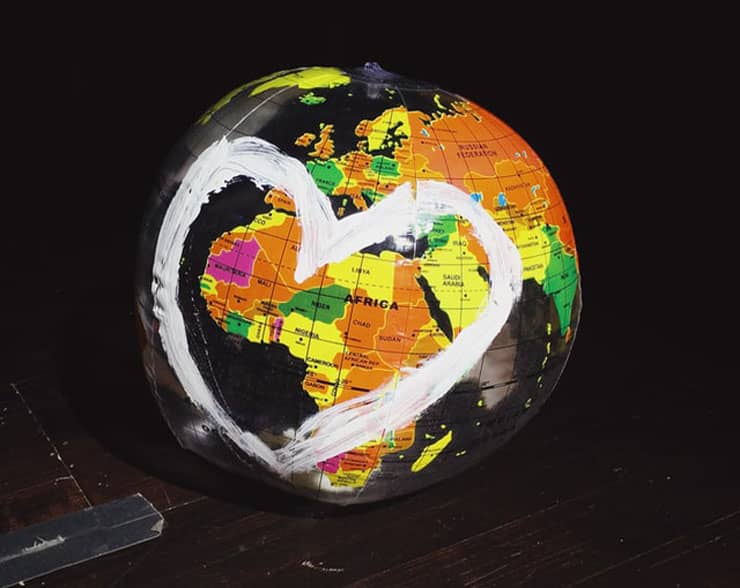 UN: Growth of World Law.
UN: Growth of World Law.
The United Nations as One
Featured Image: Photo by Brandi Alexandra on Unsplash.
By Dr. Rene Wadlow.
” The outer message of the United Nations is peace.
The inner message is Oneness.
Peace – we strive to structure;
Oneness – we manifest.”
Dag Hammarshjold has written that the United Nations was:
“the beginning of an organic process through which the diversity of peoples and their governments are struggling to find common ground upon which they can live together in the one world which has been thrust upon us before we were ready.”
Basically, the function of the UN is to create consensus (being of one mind) on crucial world issues. Such consensus-building is slow, and it is done by repeating endlessly in resolutions of the General Assembly and other UN bodies, year after year, the same idea until it becomes common place. Slowly national governments align their policies upon this common core as non-governmental organizations and the media take up the issues – sometimes a little ahead of governments and sometimes only later.

UN Decade for a Culture of Peace and Non-violence.
In 60 years, there have been six issues which have moved from the stage of the ideas of a few to become common policy. This evens out to an idea per decade, and the UN has tried to push “theme decades” with only limited success as we see from the current “UN Decade for a Culture of Peace and Non-violence.”
I see the six ideas as follows:
- 1. The end of direct colonialism. There grew from the start of the UN until the mid-1960s the idea that colonial administration had ended its usefulness as a form of government. The end of colonialism owes much to the UN system, though, of course, inequality and domination, the signs of colonial status, have not been overcome.
- 2. Apartheid as a bad structure for South Africa and for other countries tempted by similar structures of racial division was a theme of many resolutions and speeches. Slowly, the image of a multi-racial and multi-cultural society took hold, encouraged by enlightened leadership at the national level.
- 3. There are basic human rights and these should be respected. The 1948 Universal Declaration of Human Rights along with the Preamble to the UN Charter are the two lasting documents of the UN and stand as the guide for common action.
- 4. Closely related to the idea of human rights but needing a special effort at consensus building is the idea that women are equal to men and should be so treated. Although the idea is obvious, both the UN and national governments have found it difficult to put into place.
- 5. The ecological balance of the world is in danger and needs remedial action. The ecological efforts of the UN began in 1971 and are enshrined in the “Covenant with Nature” – a text of equal importance to the Universal Declaration of Human Rights, although not as well known.
- 6. There should be a Palestinian state. From the 1947 partition plan to today, this idea has been repeated. There is a broad consensus, but such a state has not been created. Without the constant discussion in the UN, the Israel-Palestine tensions would have become a bilateral issue of interest to few other states, as the issue of Kashmir, created at the same time, has faded from the UN stage to become an India-Pakistan issue.

There is now a seventh idea, increasingly articulated but not yet manifested in action.
- The idea is that there is a relationship between the goals of the UN – an idea often stressed by Kofi Annan during his period as Secretary-General: the need to accept or acknowledge the indivisible links between security, development, and human rights. “It is clear that security cannot be enjoyed without development, that development cannot be enjoyed without security, and neither can be enjoyed without respect for human rights.”
Many of us as NGO representatives have tried to push other ideas within the UN system, especially disarmament and improved techniques of conflict resolution, without success. Today, the UN has little impact on issues of violence, but no other organization does either.
Thus we have violence and a good number of tension areas where greater violence may break out. Violence-reduction is probably the chief task facing the new Secretary-General, Ban Ki-moon. There is little common ground on what can be done to reduce violence and settle conflicts peacefully. We must not underestimate the time and difficulty that it takes to build consensus within the UN, but I believe that violence-reduction (sometimes called peace) is the next “big idea” whose time has come to the UN.

President, Association of World Citizens (AWC).
Estudied International relations in The University of Chicago.
Estudied Special Program in European Civilization en Princeton University
Here are other publications that may be of interest to you.
Kenneth Waltz: The Passing of the Second Generation of the Realists.
The death of Professor Kenneth Waltz; on 12 May 2013 in New York City; at the age of 88; marks the start of the passing of the second generation of…
Benjamin Ferencz, Champion of World Law, Leave a Strong Heritage on Which To Build.
Featured Image: Prosecutor Benjamin Ferencz at the Einsatzgruppen Trial in Nuremberg. Ferencz was a civilian employee with the OCCWC, thus the picture showing him in civilian clothes. The Einsatzgruppen Trial (or „United…
Bronislaw Malinowski: Understanding Cultures and Cultural Change.
Featured Image: Bronislaw Malinowski (1884-1942), Professor of Anthropology. By Library of the London School of Economics and Political Science, No restrictions, via Wikimedia Commons. Bronislaw Malinowski (1884-1942) whose birth anniversary…
Arnold Toynbee: A World Citizens view of challenge and response.
Featured Image: Arnold Toynbee. By Atyyahesir, CC BY-SA 4.0 https://creativecommons.org/licenses/by-sa/4.0, via Wikimedia Commons. Arnold Toynbee (1889-1975) was a historian, a philosopher of history, and an advisor on the wider Middle…



